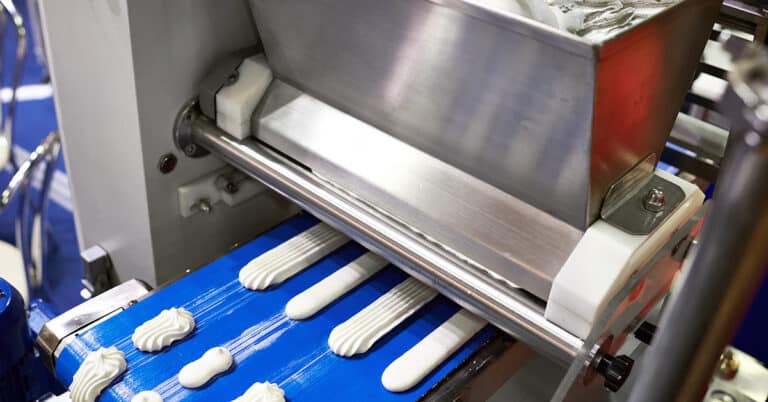MRP and ERP systems are frequently cited as important tools for efficient, successful manufacturing operations. Often, however, these terms are used interchangeably when they are not actually interchangeable. These scenarios can lead to confusion and, potentially, a misunderstanding of what each type of system is capable of and what it can provide.
Although they contain many of the same components, MRP and ERP systems are quite different in purpose and scope. It is critical to understand the difference between MRP and ERP in order to select and implement the right system and get the most out of it.
What are ERP and MRP systems? Read on to learn the definition of each one, and how they compare with each other.
MRP definition
What is MRP? MRP is an acronym for “material requirements planning,” and it refers to a software-based system of tracking materials and supplies in the facility, identifying current and future needs, and planning inventory and supply chain processes so that the right resources are on hand when they are needed.
MRP software can include several different features and can be tailored to the needs and processes of the organization. Typical MRP applications include inventory management, production monitoring, raw material supply streams, planned maintenance strategies, sales processes and purchasing information.
MRP is most often used in the pursuit of several objectives related to production and manufacturing operations. These objectives include:
- Efficient production resource management, ensuring that the right materials are on hand when they are needed
- Production management, including monitoring and facilitating adherence to manufacturing and fulfillment deadlines
- Facilitating accurate and effective inventory management and ordering/purchasing processes
- Enabling processes such as production, maintenance, sales and inventory to work together and communicate more effectively by creating a centralized information and management system
ERP definition
ERP — enterprise resource planning — can be thought of as taking the concepts of MRP and applying them to all aspects of operations. ERP relies on similar core principles — centralized information, cross-functional communication, and economies of scale — in the pursuit of operational efficiency and excellence throughout the organization.
ERP in the manufacturing industry is, in many ways, the next step in the evolution of MRP, building on the advances of MRP II by incorporating more data from more places to achieve its goals. ERP includes MRP, and is generally implemented in the pursuit of additional objectives like:
- Improved project management
- More effective personnel management
- More efficient and effective customer relationship management
- Safety enhancements
- More streamlined achievement and documentation of regulatory compliance
- An increase in overall operational efficiency by combining the above with the production efficiency benefits of MRP
The difference between MRP and ERP systems
In considering the benefits of an MRP system versus ERP system, it is important to remember that it is not a matter of choosing between two systems designed to achieve the same outcome. MRP systems and ERP systems have different scopes and applications, so in considering the two, the question should focus more on what outcomes you want to achieve, to what extent throughout the organization you would like to implement the system, and what your time and cost considerations are.
Here, we will examine some key differences between MRP and ERP systems:
Operational focus
MRP systems focus primarily on production processes, such as material management, inventory and supply chain.
ERP systems can incorporate nearly any area of business and production operations, including the tasks that MRP can apply to. Additional areas for ERP include customer relationship management, human resources, supply chain and demand forecasting, process management, safety, quality control, finance, compliance and more.
Objectives and outcomes
MRP systems are useful for introducing efficiency to production processes, including more accurate inventory management, improved deadline management, and greater insight into production resource needs.
ERP systems provide business intelligence that can increase efficiency across the entire organization, top to bottom, across functions and departments. Cost reductions are not limited to production and can be realized in numerous areas of the operation.
Implementation investment
MRP systems can, compared to ERP systems, generally be implemented more quickly and at a lower cost. The onboarding, training and scaling processes for MRP will generally be faster as well and may require less of a learning curve when measured against overall operations.
ERP systems generally require a higher monetary investment due to the increased scale and complexity, and they can take longer to implement. The system must be customized and designed, and it must be applied to a greater number of areas and departments throughout the organization. In addition, ERP systems often require company-wide training and onboarding, which can add time and money to the overall upfront cost. As described, however, the return on investment can be higher with ERP systems.
Now that you understand what MRP and ERP systems are, the differences between the two and the objectives that each is able to achieve, you are prepared to make a decision about the right implementation for your organization. If you need support in industrial maintenance, technology and/or parts please contact ATS today.






